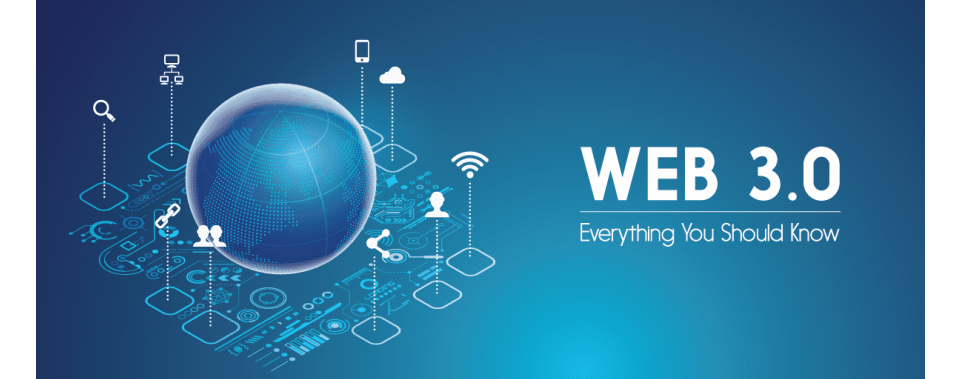
The World Wide Web now has billions of users thanks to the strong, reliable infrastructure that centralization has built. At the same time, a small group of centralized organizations control a sizable portion of the World Wide Web, making decisions on what should be permitted and what should not.
This conundrum has a solution in Web3. Web3 emphasizes decentralization and is created, run, and owned by its users rather than a Web dominated by major technological firms. Instead of placing power in the hands of businesses, Web3 gives people that authority. Let's examine how we arrived at this point before discussing Web 3.
The Early Web
The majority of people believe that the Web was created and has only been a part of modern life since that time. But the Web that most of us use now is far different from what was first intended. Breaking the brief history of the Web into two broad time periods—Web 1.0 and Web 2.0—will help you comprehend this better.
Web 1.0: Read-Only (1990-2004)
Tim Berners-Lee was hard at work creating the protocols for the World Wide Web in 1989 at CERN in Geneva. His notion? to develop open, decentralized protocols that permitted the exchange of knowledge from any location on Earth.
Around 1990 until 2004, Berners-invention, Lee's commonly referred to as "Web 1.0," underwent its first development. Web 1.0, also known as the read-only web, was mostly made up of static websites that were controlled by businesses. There was almost little user involvement, and people hardly ever created content.
Web 2.0: Read-Write (2004-now)

Social media platforms' introduction in 2004 marked the start of the Web 2.0 era. The web developed into a read-write medium rather than a read-only one. Instead of offering consumers material, businesses started to offer platforms where users could exchange user-generated content and communicate with one another. As more individuals went online, a small number of leading businesses started to hold a disproportionate percentage of the traffic and value produced on the internet. The business model based on advertising was also created by Web 2.0. Users may generate material, but they didn't own it or be paid when it was made.
Web 3.0
Gavin Wood, a co-founder of Ethereum, came up with the concept of "Web 3.0" immediately after Ethereum launched in 2014. Gavin articulated a solution to a concern shared by many early cryptocurrency adopters: the Web demanded too much trust. In other words, the majority of the Web that people currently know and use depends on their faith in a select group of private firms to behave in the public's best interests.
How does Web 3.0 work?
'The Hypertext Markup Language (HTML) standard governs the design and delivery of web pages with Web 1.0 and Web 2.0 technologies. With Web 3.0, HTML will still be a core layer, but how it relates to data sources and where those data sources are located may change from past web generations.
In the Web 2.0 age, the majority of websites and almost all apps rely on some kind of centralized database to supply data and support functionality. With Web 3.0, apps and services employ a decentralized blockchain in place of a centralized database. The fundamental notion behind blockchain is that there is a type of distributed consensus rather than an arbitrary central authority.
In the blockchain and Web 3.0 communities, the idea of a decentralized autonomous organization is an emerging form of governance (DAO). With a DAO, Web 3.0 technologies and communities offer a type of self-governance in an effort to move away from centralized control over platform operations.
More so than with fiat money, Web 3.0 also functions fundamentally with cryptocurrencies. The usage of cryptocurrencies, which are all constructed and enabled on top of blockchain technology, enables finance and the use of a decentralized form of payment throughout Web 3.0.
The IPv4 addressing space was extensively used to create both Web 1.0 and Web 2.0. There is a need for additional internet addresses in Web 3.0 as a result of the web's tremendous expansion over the years, which is what IPv6 offers.
Some examples of web 3.0 applications
Let’s look at some examples of web3 in practice:
Bitcoin – The original cryptocurrency has been around for more than ten years, and the protocol itself is decentralized, although not all of its ecosystem is.
Diaspora – Non-profit, decentralized social network
Steemit – Blockchain-based blogging and social platform
Augur – Decentralised exchange trading market
OpenSea – A marketplace for buying and selling NFTs, itself built on the Ethereum blockchain
Sapien – Another decentralized social network, built on the Ethereum blockchain
Uniswap – Decentralized cryptocurrency exchange
Everledger – Blockchain-based supply chain, provenance, and authenticity platform